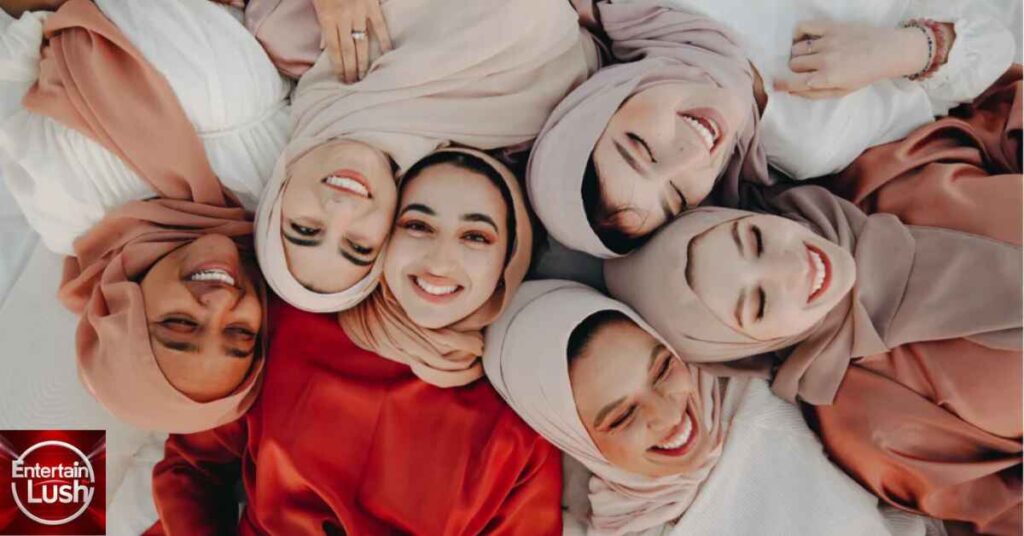The hijab, a head covering worn by many Muslim women, often sparks curiosity and debate. Misconceptions about its meaning and purpose can lead to misunderstandings and prejudice. This lack of knowledge creates barriers between communities.
By exploring the religious, cultural, and fashion aspects of the hijab, we can foster greater understanding and appreciation for this complex symbol of faith and identity.
What is a Hijab?
It is a head covering worn by many Muslim women. It typically covers the hair, neck, and chest. Hijabs come in various styles and fabrics. Some women wear them for religious reasons, while others see it as a cultural practice. It is an important part of Islamic dress for many. It represents modesty and privacy in public spaces.
Historical Context of Hijab
It has a long history in Islamic culture. It dates back to the 7th century when Islam began. The practice of covering one’s head was common in many ancient cultures. In Islam, it became associated with modesty and faith. Over time, the hijab evolved in different regions. Today, it remains an important symbol for many Muslim women worldwide.
Quranic References to Hijab
The Quran mentions its concept in several verses. These verses guide Muslim women on modest dress. The term “hijab” in the Quran refers to a barrier or partition. It’s interpreted as a guideline for clothing and behavior. Many Muslims see these verses as instructions to wear the hijab. Others interpret them differently, leading to diverse practices.
Spiritual Meaning of Hijab
For many Muslim women, it holds deep spiritual meaning. It’s seen as a way to express faith and devotion to Allah. Wearing a hijab can be a form of worship. Some women feel it brings them closer to their religion. It may also serve as a reminder of Islamic values. It can help wearers focus on inner beauty and character.
Hijab in Different Islamic Schools of Thought
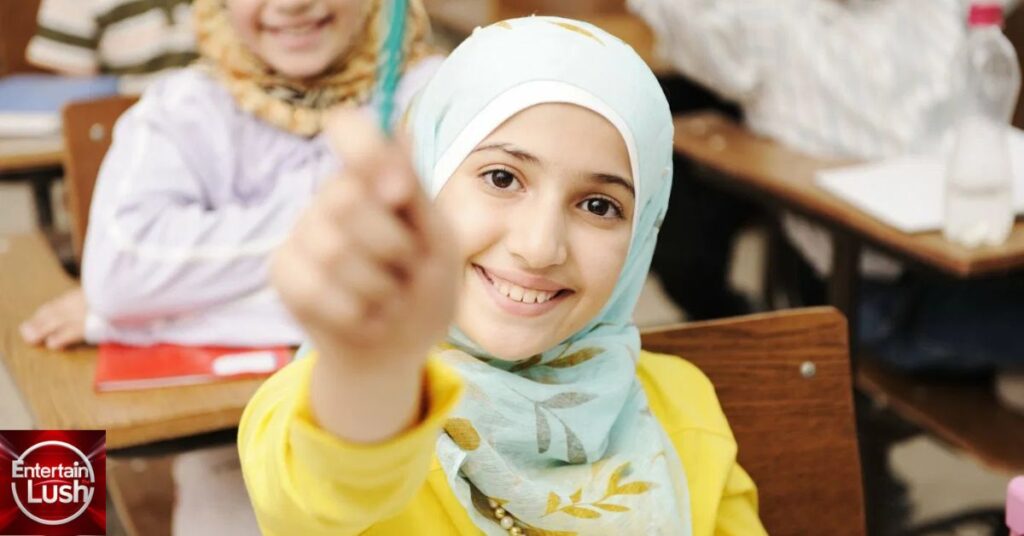
Various Islamic schools interpret hijab differently. Sunni and Shia traditions may have distinct views. Some schools see it as mandatory, others as recommended. The extent of coverage also varies between interpretations. These differences lead to diverse practices worldwide. Understanding these viewpoints helps explain its variety of styles and customs.
Cultural Significance of Hijab
It is more than just a piece of cloth. It’s a symbol packed with meaning. For many Muslim women, wearing a hijab is a way to show their faith. It’s also tied to their culture and personal identity. Over time, it has become a powerful symbol. It represents modesty, respect, and religious devotion. But it’s also sparked debates about women’s rights and religious freedom in different parts of the world.
Hijab in Different Muslim Cultures
Hijabs come in all shapes and colors across the Muslim world. In Indonesia, you might see colorful headscarves called kerudung. Morocco is known for its flowing haiks. Iranian women often wear chadors. Each country adds its own flair to the hijab. This shows how Islam adapts to local traditions. It’s amazing to see how one piece of clothing can look so different from place to place.
Hijab and Identity
For many Muslim women, it is a big part of who they are. It’s not just about religion – it’s personal too. Some feel more confident with their hijab on. Others see it as a way to express their style. Many women say wearing it helps them feel connected to their culture. It can be a source of pride and strength. But it’s a personal choice, and every woman’s relationship with the hijab is unique.
Hijab in Non-Muslim Countries
Wearing a hijab can be tough in places where it’s not common. Some women face discrimination or curious looks. Others worry about fitting in at work or school. But many hijab-wearing women are breaking stereotypes. They’re showing that you can be Muslim and fully part of society. In recent years, more countries have started to accept and protect religious dress. It’s a slow change, but it’s happening.
Basic Styles
There are lots of ways to wear it. The simple wrap is great for beginners. Just drape it over your head and pin it under your chin. The Al-Amira style uses a cap with a scarf on top. It’s quick and easy. For a classic look, try the Turkish style. It covers the neck and frames the face nicely. With practice, anyone can master these basic styles.
Choosing the Right Style for Different Occasions
It can change with your outfit and plans. For a day at the beach, a light, breezy style works well. At a wedding, you might want something fancier with sparkles or embroidery. Work calls for neat, professional styles. The key is matching your hijab to the event. It’s like picking the right shoes – your hijab should fit the occasion.
Tips for Styling a Casual Daytime Look
For everyday wear, comfort is key. Soft, breathable fabrics like cotton or jersey are great choices. Neutral colors go with everything. Try a simple wrap or pull-on style for busy mornings. A few pretty pins can add flair without fuss. Remember, your daily practice should make you feel good and confident as you go about your day.
Elevating Your Office Attire with Hijab
At work, it should look polished and professional. Solid colors or subtle patterns work well. Avoid anything too flashy or loose. A neatly tucked style keeps things tidy. Try matching your hijab to your outfit for a put-together look. With the right style, your hijab can be a chic addition to your work wardrobe.
Glamming Up for Special Events with Creative Styles
Special occasions call for special hijabs! For weddings or parties, don’t be afraid to go all out. Try rich fabrics like silk or chiffon. Add some sparkle with sequined edges or a jeweled pin. Experiment with layered styles or dramatic drapes. It can be the star of your outfit. Just remember to practice your style before the big day!
Modern Hijab Fashion Trends
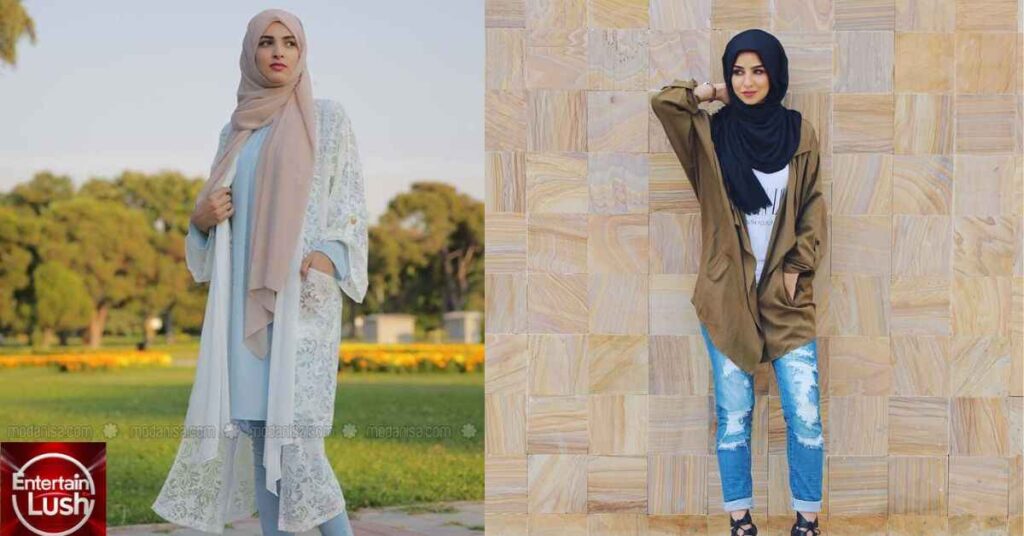
Its fashion is always changing. These days, it’s all about mixing tradition with modern style. You’ll see hijabs paired with trendy clothes like wide-leg pants or oversized blazers. Prints are big – florals, geometrics, you name it.
Some women love layering different textures. Others go for sleek, minimalist looks. In 2024, we’re seeing more eco-friendly hijabs made from sustainable materials. It’s exciting to see hijab fashion evolve and embrace new ideas.
Accessorizing and Playing with Colors in Hijab
Adding flair to your hijab is fun and easy. Brooches, pins, and headbands can jazz up any style. Don’t be afraid of color! Bright color can lift your mood and outfit. Try matching it to your shoes or bag for a put-together look. Ombre and tie-dye hijabs are popular now. Remember, your hijab is a chance to express yourself. Play around and find what makes you feel great.
Influential Hijab Fashion Designers and Influencers
Its fashion has its own stars. Designers like Haute Hijab and Modanisa are changing the game. On social media, hijabi influencers share style tips with millions. Dina Torkia and Habiba Da Silva are big names on Instagram. These trendsetters show that modesty and fashion go hand in hand. They’re inspiring women worldwide to embrace their style while staying true to their beliefs.
Choosing the Right Fabric for Hijab
Picking the right hijab fabric makes a big difference. Cotton is great for hot days – it’s light and breathes well. Silk feels luxurious but can be slippery. Chiffon drapes beautifully for fancy events. In winter, try warm fabrics like wool or cashmere. Jersey is super comfy for everyday wear. Think about the weather and your plans when choosing your hijab fabric. The right material can keep you comfortable all day.
Read This Blog: Hidden Gems in TotallyNDFW: Your Ultimate Guide to Undiscovered Treasures
Maintaining and Caring for Your Hijabs
Taking care it helps them last longer. Most can be machine-washed on a gentle cycle. Use a mild detergent and cool water. Hang them to dry – avoid the dryer. For delicate fabrics, hand-washing is best. Store your hijabs folded or on hangers to prevent wrinkles. A little care goes a long way in keeping your hijabs looking fresh and beautiful
Hijab-Friendly Hairstyles
Your hairstyle can make wearing a hijab more comfortable. Low buns work well and keep hair neat. Braids can help distribute weight evenly. Some women like using a volumizing scrunchee for extra height. Whatever style you choose, make sure it’s secure and doesn’t create lumps under your hijab. The right hairstyle can make your hijab look smoother and feel more comfortable all day.
Do Women Have a Choice in Wearing a Hijab?
The choice to wear a hijab is personal and complex. Many women freely choose to wear it as an expression of faith. Others feel pressure from family or community. In some places, it’s required by law. But in many countries, it’s up to the individual. The key is respecting each woman’s decision. Whether to wear it or not should be a personal choice, free from outside pressure.
Do Women Feel Empowered in a Hijab?
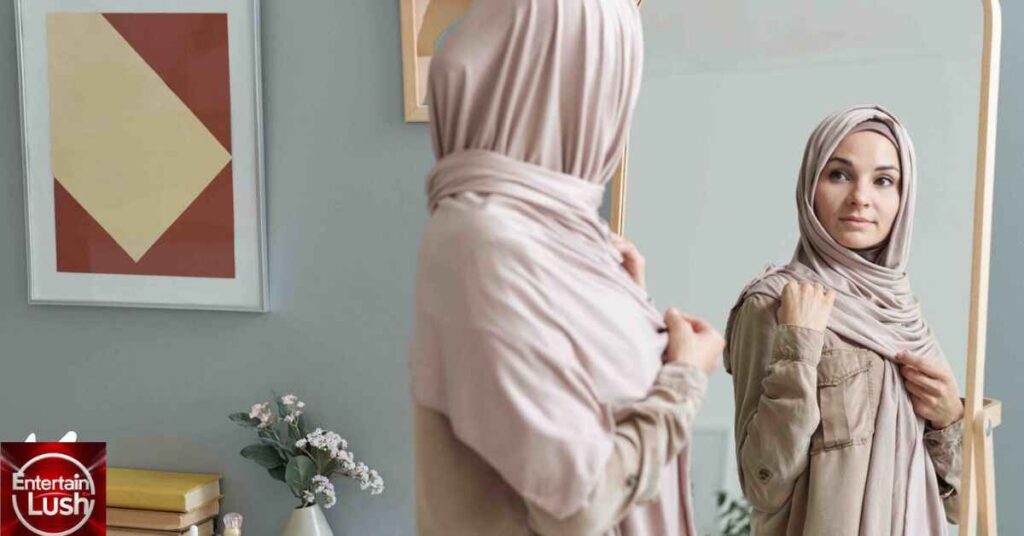
For many women, wearing it is empowering. They see it as a way to control their image and reject objectification. Some feel it helps them focus on their personality and achievements, not just looks. Wearing it can be a proud display of identity and beliefs. But feelings vary – what’s empowering for one woman might not be for another. It’s all about personal experience and perspective.
Also Read: Emma Coleman Latta’s Impact on South Carolina: A Hidden Historical Gem
Misconceptions and Stereotypes About Hijab
There are many myths about it and the women who wear them. Some think it’s always forced – that’s not true. Others believe hijabi women can’t be fashionable or successful – also false. Many assume all Muslim women wear it, but that’s not the case. These stereotypes can lead to discrimination. The truth is, women who wear it are diverse in their beliefs, styles, and life choices. It’s important to look beyond the hijab and see the individual.
Hijab in Sports and Athletics
More Muslim women are making waves in sports while wearing it. In 2016, fencer Ibtihaj Muhammad became the first American to compete in the Olympics wearing it. Big brands like Nike now make special sports hijabs. These are lightweight and breathable, perfect for athletes. We’re seeing hijabi women in soccer, basketball, and even surfing. It shows that faith and sports can go hand in hand. These athletes are breaking barriers and inspiring others.
Hijab in the Workplace
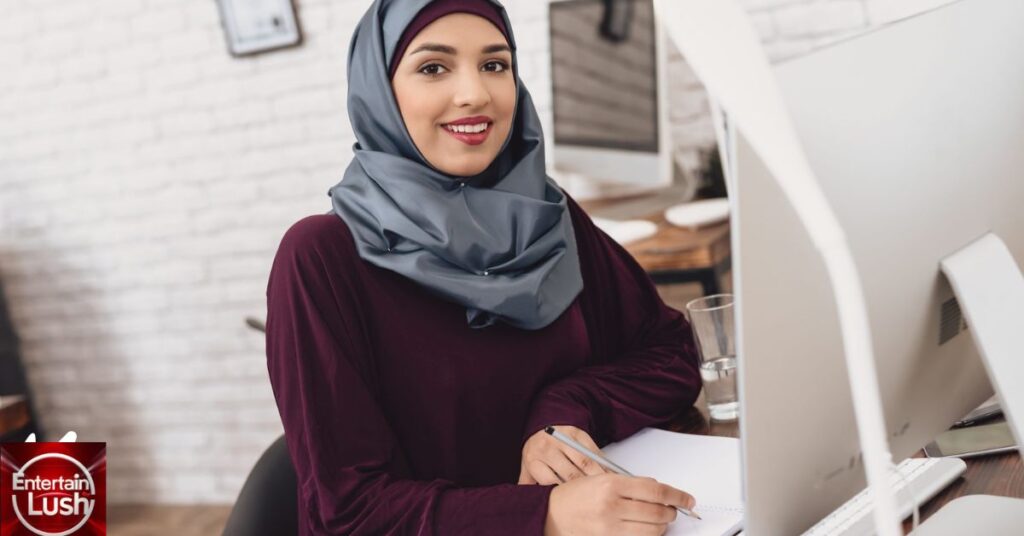
Wearing it at work can be tricky sometimes. Some jobs have dress codes that clash with hijabs. But many countries have laws protecting religious dress. In the US, employers must try to accommodate religious clothing.
Still, some women face discrimination. They might get odd looks or feel left out. But things are slowly changing. More companies are embracing diversity. They’re learning that it doesn’t affect how well someone can do their job.
Hijab in Media and Popular Culture
We’re seeing more types on TV and in movies lately. In 2019, Hala became the first hijabi main character in a Disney+ film. Magazines are featuring models in hijabs too. These changes matter. They help people see hijabi women as normal people. But there’s still work to do. Some shows still use hijabs to show a character is “foreign” or “oppressed.” We need more diverse, real portrayals of hijabi women in media.
FAQ
What is the purpose of wearing a hijab?
The main purpose of wearing it is to practice modesty as prescribed in Islam. It’s also seen as a way to focus on inner beauty and spiritual growth rather than physical appearance.
What are the rules of wearing a hijab?
The basic rule is to cover the hair, neck, and chest. The hijab should be loose and opaque, not revealing the shape of the body underneath.
When can a woman take off her hijab?
A woman can remove it in private, around close family members like her husband, father, brothers, or young children. She can also remove it in women-only spaces.
What is wearing a hijab called?
The act of wearing a hijab is often referred to as “hijab” itself. Some also use the term “observing hijab” or “practicing hijab.”
What does the Quran say about hijab?
The Quran advises both men and women to dress modestly. It specifically tells women to draw their veils over their chests and to not display their beauty except to close family members.
Why does Allah want hijab?
In Islamic belief, Allah prescribes hijab as a means of protecting modesty, promoting respect, and focusing on spiritual rather than physical attributes.
Conclusion
The hijab is more than just a piece of cloth. It’s a symbol of faith, identity, and personal choice for many Muslim women. While it has deep religious roots, today it’s also a fashion statement and a form of self-expression. It sparks important conversations about faith, freedom, and cultural understanding.
As our world becomes more diverse, learning about and respecting different practices like wearing it becomes increasingly important. It reminds us that true beauty comes in many forms.
Welcome to Entertainlush.com! Dive into a world of business insights, travel adventures, entertainment buzz, celebrity gossip, and sports highlights. Our expert writers bring you fresh, exciting content daily. Stay informed and entertained with Entertainlush.com!

